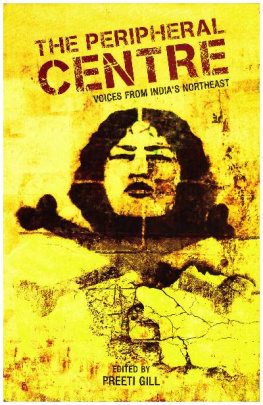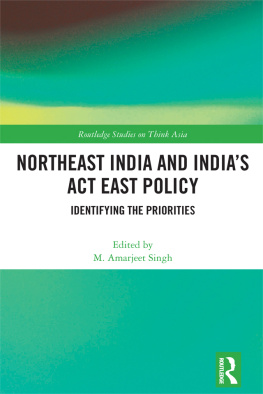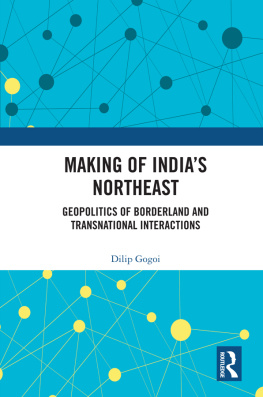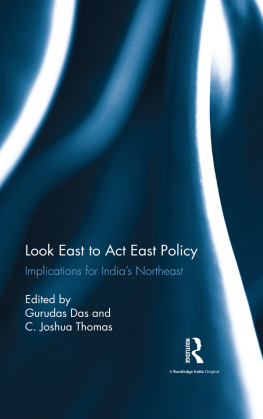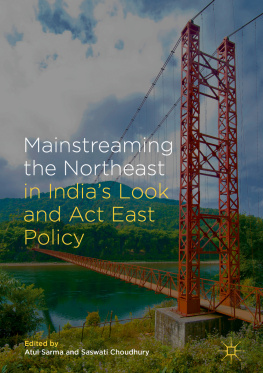Preeti Gill - The Peripheral Centre: Voices from Indias Northeast
Here you can read online Preeti Gill - The Peripheral Centre: Voices from Indias Northeast full text of the book (entire story) in english for free. Download pdf and epub, get meaning, cover and reviews about this ebook. year: 2015, publisher: Zubaan, genre: Politics. Description of the work, (preface) as well as reviews are available. Best literature library LitArk.com created for fans of good reading and offers a wide selection of genres:
Romance novel
Science fiction
Adventure
Detective
Science
History
Home and family
Prose
Art
Politics
Computer
Non-fiction
Religion
Business
Children
Humor
Choose a favorite category and find really read worthwhile books. Enjoy immersion in the world of imagination, feel the emotions of the characters or learn something new for yourself, make an fascinating discovery.
- Book:The Peripheral Centre: Voices from Indias Northeast
- Author:
- Publisher:Zubaan
- Genre:
- Year:2015
- Rating:4 / 5
- Favourites:Add to favourites
- Your mark:
- 80
- 1
- 2
- 3
- 4
- 5
The Peripheral Centre: Voices from Indias Northeast: summary, description and annotation
We offer to read an annotation, description, summary or preface (depends on what the author of the book "The Peripheral Centre: Voices from Indias Northeast" wrote himself). If you haven't found the necessary information about the book — write in the comments, we will try to find it.
Preeti Gill: author's other books
Who wrote The Peripheral Centre: Voices from Indias Northeast? Find out the surname, the name of the author of the book and a list of all author's works by series.
The Peripheral Centre: Voices from Indias Northeast — read online for free the complete book (whole text) full work
Below is the text of the book, divided by pages. System saving the place of the last page read, allows you to conveniently read the book "The Peripheral Centre: Voices from Indias Northeast" online for free, without having to search again every time where you left off. Put a bookmark, and you can go to the page where you finished reading at any time.
Font size:
Interval:
Bookmark:
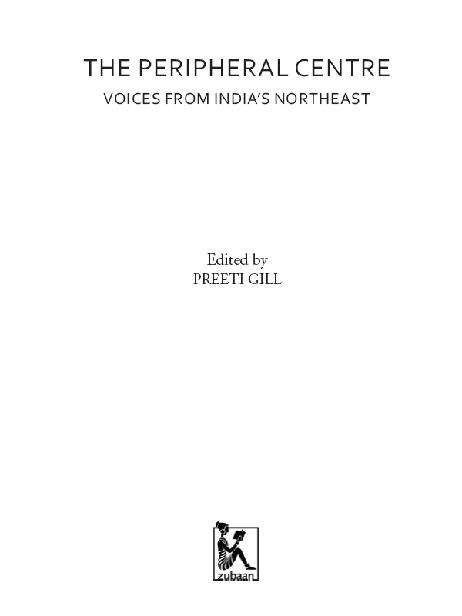

an imprint of Kali for Women
128b Shahpur Jat
1 st floor
New Delhi 110 049
www.zubaanbooks.com
Email:
This edition published by Zubaan, 2013
Copyright This collection Zubaan, 2010
Copyright individual essays with the authors
Print source ISBN: 9789381017951
Printed at Raj Press, R-3 Inderpuri, New Delhi 110 012
Engaging with the Northeast: The 'outsider' looks 'in'
PREETI GILL
SANJIB BARUAH
RUPA CHINAI
SANJOY HAZARIKA
MAMANG DAI
SANJEEB KAKOTY
ROSHMI GOSWAMI
TEMSULA AO
ESTHER SYIEM
LAL DENA
NANDINI THOCKCHOM
V. SAWMVELI & ASHLEY TELLIS
SUMI KRISHNA
RAHUL GOSWAMI- Conflicts and Constructive Work:
Strengthening Civil Society in the Northeast
MONICA BANERJEE
SHYAMALA SHIVESHWARKAR
RUPA CHINAI
P. NGULLY
DEEPTI PRIYA MEHROTRA
MITRA PHUKAN
TILOTTOMA MISRA
N. VIJAYALAKSHMI BRARA
M.K. BINODINI
EASTERINE IRALU- Dealing with Conflict and Violence:
The Power of Attitude
SUMITA GHOSE
For friends in the Northeast
For a country which cannot be found on any map.
The outsider looks in
PREETI GILL
that it would rain every summer,
that nights would be still with sleep
and that the green fern would uncurl
ceaselessly, by the roadside.
that river and field would stand forever
invulnerable, even to the dreams of strangers,
for we knew where the sun lay resting
in the folded silence of the hills.
The footfall of soldiers is drowned and scattered.
In the hidden exchange of news we hear
that weapons are multiplying in the forest.
hiding terror in the carnivorous green.
Why did we think ritual gods would survive
deathless in memory,
in trees and stones and the sleep of babies;
Now, when we close our eyes
and cease to believe, god dies.
Font size:
Interval:
Bookmark:
Similar books «The Peripheral Centre: Voices from Indias Northeast»
Look at similar books to The Peripheral Centre: Voices from Indias Northeast. We have selected literature similar in name and meaning in the hope of providing readers with more options to find new, interesting, not yet read works.
Discussion, reviews of the book The Peripheral Centre: Voices from Indias Northeast and just readers' own opinions. Leave your comments, write what you think about the work, its meaning or the main characters. Specify what exactly you liked and what you didn't like, and why you think so.

